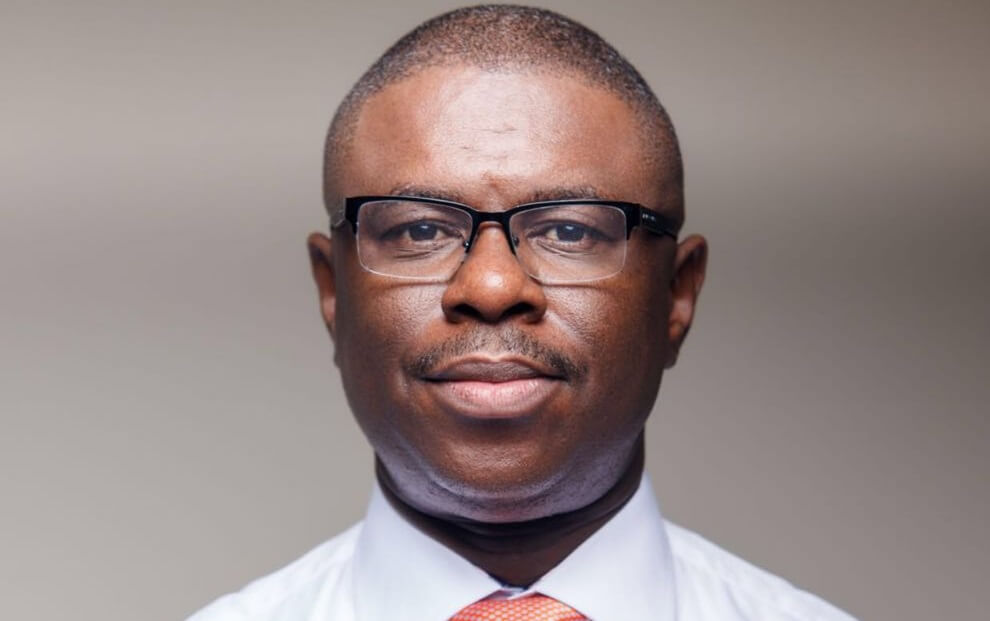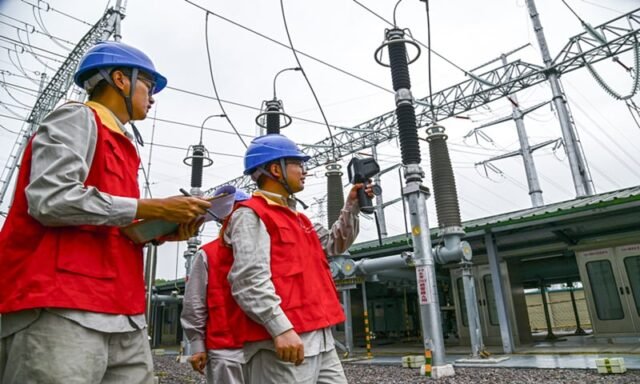When Chinese President Xi Jinping launched his sweeping electrification campaign in 2014, few outside Beijing felt its ripple effects. Today, China is estimated to derive nearly 30% of its energy from electricity—more than any Western nation—and is reshaping its national identity as a pioneering “electrostate.” This transformation didn’t happen overnight; it has been decades in the making, driven by massive investment, cutting-edge grid upgrades, and a clearly defined national vision.
Nigeria, a country where more than 40% of the population lacks reliable power, risks falling further behind in the global energy race. Yet, with an abundant endowment of renewable resources and a booming young population, the nation stands at a critical inflexion point. By studying China’s electrification journey—from rural grid schemes to ultra‑high‑voltage networks—Nigeria has a chance to light more than just its cities; it can spark a national economic revival.
Table of Contents
A Bottom-Up, Multi-Grid Strategy
Between 2000 and 2014, China lifted 165 million rural residents into the national grid, achieving 99% household electrification by 2009. Their secret? A hybrid, tiered grid layout combining central high-voltage transmission lines with county-level mini-grids and stand-alone village systems. Counties formed committees—led by local governors—to plan, invest, and manage rural electrification efforts, with Beijing steering policy and finance.
Nigeria’s Application:
- Empower local renewable microgrids: solar, mini-hydro, and battery systems tailored to specific communities—especially off-grid areas.
- Create “electrification committees” within each state or local government area to govern deployment.
- Introduce fiscal incentives—tax breaks, soft loans, capacity-building—to help small hydro and renewable firms invest locally.
Ultra-High-Voltage (UHV) Infrastructure
China invested hundreds of billions to build what is now the world’s most advanced ultra-high-voltage grid, allowing renewables-powered electricity to travel over thousands of kilometres efficiently. This backbone underpins not just domestic consumption, but a powerhouse manufacturing and EV ecosystem.
Nigeria’s Application:
- Reinforce high-voltage corridors connecting solar-rich northern states to urban demand centres in Lagos and Abuja.
- Modernise existing substations and interconnecting lines, and pursue smart-grid technologies.
- Structure long-term loans or joint ventures with Chinese firms and banks—akin to the broader BRI energy-finance model.

State-Led Financing & Industrial Policy
China’s journey involved both state-owned giants and private firms pouring billions into renewables like solar, wind, and electric vehicles. Their dramatic scale-up slashed costs, such as offshore wind dropping from $95/MWh to $55/MWh in just a few years.
Nigeria’s Application:
- Launch a “National Electrification Fund” to enable cheap financing for renewables and grid upgrades through private sector channels.
- Establish joint ventures with Chinese battery and solar manufacturers to set up local assembly lines or factories in Nigeria, similar to the nascent Lagos solar panel initiative.
- Coordinate energy policy and favourable pricing to guarantee demand for Nigerian-made clean-tech.
Decentralised Mini-Grids & Off-Grid Leapfrogging
Nigeria already installed 103 solar-hybrid mini-grids by 2022—powering about 230,000 people. With Chinese support, the nation is scaling up through simulation and standardisation centres funded jointly by Huawei and Nigeria’s Rural Electrification Agency.
Nigeria’s Application:
- Support the mini-grid simulation and standardisation centre to enable quality control, training, and scalability.
- Expand off-grid financing and support net-metering policies so households can sell excess solar power back to the grid.
- Encourage community ownership and maintenance models with pre-qualified technology suppliers.
Skill Development & Localisation
China didn’t just build systems; it built the workforce. Hydropower and solar firms trained thousands of African technicians—789 recorded education or training projects between 2000 and 2017.
Nigeria’s Application:
- Use the mini-grid centre to offer certification programs for technicians, engineers, and policymakers.
- Partner with universities and technical colleges to create accredited renewable energy diplomas and apprenticeships.
- Promote local manufacturing of renewable equipment, bolstered by assembly lines for EV tricycles, battery packs, and solar modules.
Industrial Value‑Addition in Mining and Manufacturing
Across Nasarawa, Nigeria’s lithium reserves are attracting Chinese firms aiming to build battery and EV plants, moving from raw export to local value chains.
Nigeria’s Application:
- Support infrastructure, legal frameworks, and incentives for lithium processing at home.
- Collaborate on downstream industries—cell manufacturing, battery assembly, and green-electrical mobility.
- Propel educational programs in advanced materials, engineering, and tech-driven manufacturing.
Consistent Policy and Governance
China’s success stems from consistent, top-down policies—five-year plans, industrial roadmaps, and coordinated investment cycles. Nigeria, by contrast, wrestles with frequent policy rollbacks and shifts.
Nigeria’s Application:
- Anchor federal and state electrification within a solid, multi-decade policy framework—Nigeria Vision 2050 and the Medium-Term Development Plan already hint at this direction.
- Assign annual growth targets in renewable capacity, rural electrification, and local manufacturing, akin to China’s 5% yearly GDP targets.
- Enhance transparency and accountability via data-driven planning and clear, measurable energy milestones.
8. Market Mechanisms and Competitive Pricing
Recently, China introduced market pricing for new renewable projects—placing renewables on an even playing field with coal, enforcing competitive bids, and signalling cost-benefit clarity.
Nigeria’s Application:
- Enable competitive bidding for solar, mini-grid, and storage projects, while gradually shifting to cost-reflective tariffs.
- Create incentives for wholesale electricity markets and distribution competitiveness.
- Foster private capital participation—especially from domestic banks and Chinese institutions.
Challenges and Adaptations
Emulating China doesn’t mean copying its blueprint wholesale. The risk of overcapacity is real—China has had to reckon with wasted build-outs and international trade tensions. Nigeria must balance ambition with careful planning, local needs, and a sustainable pace.
Case in Point: Nigeria-China Mini‑Grid Centre
The Huawei–REA mini-grid centre, launched in September 2024 at Huawei’s Shenzhen HQ, is groundbreaking. With simulation labs for environmental testing, standardised protocols, and training pipelines, it promises scalable and reliable grid expansion. By building local capacity and ensuring quality standards, this centre can become a catalyst for nationwide, decentralised electrification, and provide a real-world model of the Chinese approach in Nigeria.
The Road Ahead: A Shared Electrified Future
China’s electrification drive grew from a strategic vision—from UHV grids to EVs, rural mills to national gigawatt scale clean-tech factories—but Nigeria holds its own strengths: rich solar resources, mineral wealth, massive untapped demand, and a rising tech-savvy youth.
Here’s a roadmap based on China’s model, adapted for Nigerian realities:
| Chinese Lesson | Nigerian Adaptation |
|---|---|
| Rural county electrification committees | State/local mini-grid agencies |
| UHV national grid | Strengthened transmission corridors |
| Fiscal support for renewables | National Electrification Fund |
| Local clean-tech assembly | Solar panel and battery factories |
| Skilled technician programs | Renewable energy apprenticeships |
| Competitive renewables bidding | Market-based IPP auctions and tariffs |
| Lithium processing pilot | EV battery and value-added industries |
| Long-term energy planning | 2050 vision with annual milestones |
Implementing this would require robust intergovernmental collaboration—from federal policy mandates to local execution and metrics—but the boost in energy access, economic productivity, and climate resilience could be transformative.

Conclusion
What can Nigeria learn from China’s electricity revolution? The answer isn’t rhetoric: it’s systemic design. China’s approach—bottom-up empowerment, massive state-led investment, technical standardization, skill cultivation, and market mechanisms—offers a scalable template.
For Nigeria, adopting this model could mean achieving near-universal electrification, stimulating new industries around EVs and lithium, and accelerating job creation. And in a continent where energy access remains a formidable barrier, Nigeria’s success could inspire a regional wave of renewable progress.
Nigeria’s central challenge is no longer whether it can keep the lights on—but how brightly it will light up its future. By learning from China’s decade of disciplined energy planning and executing at the local scale, Abuja could deliver sustained economic growth, powering homes, fueling industries, and recharging hope for millions.
Join Our Social Media Channels:
WhatsApp: NaijaEyes
Facebook: NaijaEyes
Twitter: NaijaEyes
Instagram: NaijaEyes
TikTok: NaijaEyes








































